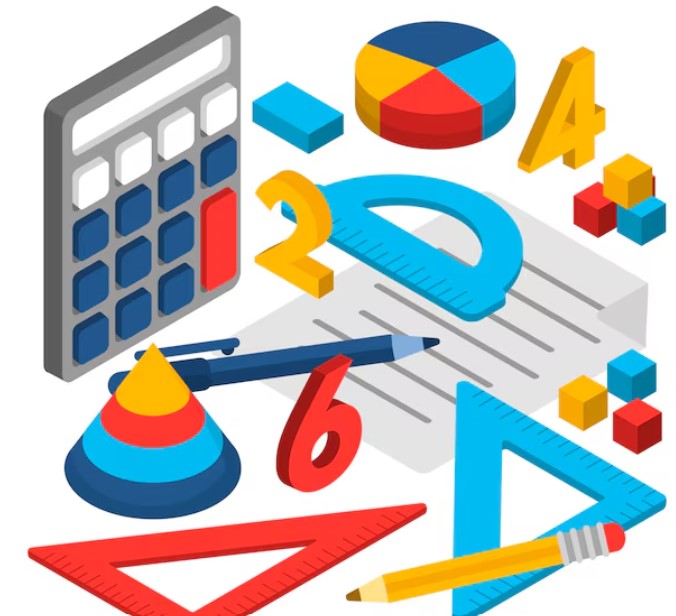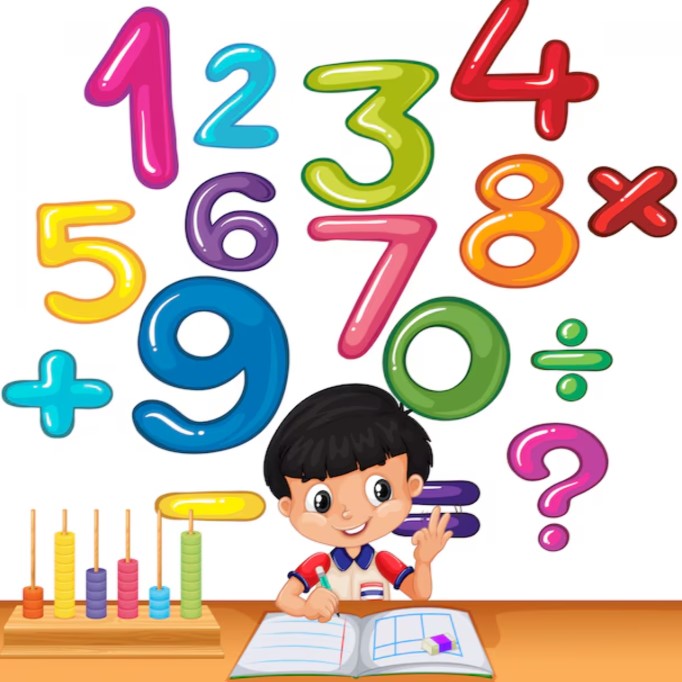Introduction: Exploring 10.9756097561 in Fractional Form
In the realm of mathematics, the ability to convert decimals into fractions or mixed numbers is a crucial skill. Whether you’re tackling academic problems or handling real-world calculations, understanding how to express numbers like 10.9756097561 as a fraction opens up a deeper understanding of number theory. This conversion is not only important for academic purposes but also plays a significant role in various practical applications, including engineering and precise measurement tasks. In this guide, we will walk through the process of transforming 10.9756097561 as a fraction, simplifying it step by step, and highlighting the importance of this skill.
Stay here more latest update: Homeworkify
Why Converting Decimals to Fractions is Essential
At first glance, decimals like 10.9756097561 might seem easier to work with, especially when using a calculator. However, fractions provide a clearer insight into numerical relationships and are fundamental in many mathematical concepts. Converting decimals into fractions, particularly larger decimals like 10.9756097561, allows for a deeper understanding of how numbers work and interact with one another.
Table of Contents
Here are some key reasons why learning to convert decimals like 10.9756097561 as a fraction is essential:
- Fractions Clarify Relationships: Fractions excel in expressing ratios and proportions. By converting decimals to fractions, we can simplify equations and represent relationships more accurately.
- Simplifying Complex Problems: In mathematics, problems are often easier to manage when written in fraction form, particularly when dealing with complex operations like addition, subtraction, or multiplication.
- Real-World Applications: From construction projects to scientific research, fractions are commonly used in fields where precision is key. For instance, converting 10.9756097561 as a fraction can be useful for engineers, architects, and anyone involved in fields requiring accurate measurements.
- Exam and Test Readiness: Many standardized exams, including math tests and competitive exams, require proficiency in converting between decimals and fractions. Knowing how to express 10.9756097561 as a fraction is essential for performing well in these tests.
How to Convert 10.9756097561 into a Fraction
The process of converting 10.9756097561 as a fraction is straightforward. Let’s break it down:
- Separate the Whole Number: The number 10.9756097561 consists of two parts: the whole number (10) and the decimal (0.9756097561). So, we can start by writing 10 as a mixed number:
1097560975611000000000010 \frac{9756097561}{10000000000}10100000000009756097561 - Convert the Decimal to a Fraction: To convert the decimal portion, take the number after the decimal point (0.9756097561) and write it as a fraction with a denominator of 10,000,000,000 (since the decimal goes to 10 decimal places). This gives:
1097560975611000000000010 \frac{9756097561}{10000000000}10100000000009756097561 - Simplify the Fraction: The fraction 975609756110000000000\frac{9756097561}{10000000000}100000000009756097561 can be simplified if possible. In this case, we divide both the numerator and the denominator by their greatest common divisor (GCD). After simplification, you will get a more manageable fraction.
- Final Mixed Number Form: After performing the simplification, you’ll have a fraction that accurately represents 10.9756097561 as a fraction in its simplest form.
Why Converting 10.9756097561 to a Fraction Matters
When you convert 10.9756097561 as a fraction, you’re not just performing a mathematical operation—you’re developing a fundamental skill that is widely applicable across various fields. This conversion is particularly important for:
- Engineering: Accurate measurements are essential in design and construction. Engineers rely on fractions to represent precise dimensions and ratios.
- Finance: In financial calculations, converting decimals to fractions can help with better analysis and rounding when dealing with interest rates, investments, and taxes.
- Everyday Life: Whether you’re dividing a pizza or adjusting a recipe, understanding fractions is often more useful than decimals for precise divisions.
Step 1: The Basics of 10.9756097561 as a Mixed Number
A mixed number is a combination of a whole number and a fraction, representing quantities that are more than a whole but less than the next whole number. To convert 10.9756097561 as a fraction or mixed number, we first separate the whole number from the decimal portion. This will allow us to focus on each part individually, making the conversion process straightforward.
Step 2: Simplifying the Whole Number
The whole number component of 10.9756097561 as a fraction or mixed number is simply ‘10’. This integer will form the base of our mixed number. To complete the conversion, we’ll convert the decimal portion into a fraction and combine it with this whole number.
Step 3: Understanding the Decimal Part
Decimals are another way to express fractions, with the denominator based on the power of 10. In this case, the decimal part of 10.9756097561 as a fraction is ‘0.9756097561’. Our task is to express this decimal as a fraction with a clear denominator, which we’ll simplify as much as possible.
Step 4: Converting the Decimal to a Fraction
To convert the decimal part ‘0.9756097561’ into a fraction, we first recognize that the number extends to ten decimal places. This gives us the fraction 9756097561/10000000000. The denominator of 10,000,000,000 (ten billion) reflects the position of the decimal point.
Step 5: Simplifying the Fraction
While the fraction 9756097561/10000000000 represents the decimal portion of 10.9756097561 as a fraction, it may be simplified further by dividing both the numerator and denominator by their greatest common divisor (GCD). However, due to the precision of these numbers, the simplification will be minimal, and the fraction remains relatively unchanged.
Step 6: Combining the Whole and Fractional Parts
After converting the decimal portion to a fraction, we combine it with the whole number. This results in the mixed number 10 + 9756097561/10000000000, which accurately represents 10.9756097561 as a fraction. This mixed number expresses both the whole part and the fractional part, bridging the two concepts effectively.
Step 7: The Practical Use of Mixed Numbers
Mixed numbers are incredibly useful in everyday situations. For example, in cooking, a recipe may require 1 3/4 cups of flour, or in construction, precise measurements such as 2 1/2 inches of material are common. Mixed numbers offer a simple and efficient way to express quantities that are more than a whole number but less than the next.
Step 8: Understanding Fractions
Fractions, often perceived as complicated, are a fundamental concept in mathematics. A fraction is simply a division of a whole into equal parts. By understanding fractions as parts of a whole, we can simplify their complexity and better understand how to convert them to decimals or mixed numbers like 10.9756097561 as a fraction.
Step 9: The Importance of Mixed Numbers in Real Life
Beyond the classroom, the use of mixed numbers is vital in fields such as engineering, finance, and daily life. Whether you’re calculating measurements for a construction project, dividing assets in financial planning, or preparing a meal, mixed numbers help ensure accuracy and precision.
Step 10: The History of Fractions
Fractions have played a pivotal role in human history. The ancient Egyptians used fractions for land division, while the Babylonians employed them for astronomical calculations. The enduring relevance of fractions, including their conversion to decimals and mixed numbers like 10.9756097561 as a fraction, showcases their timeless utility and significance in human progress.
The Nature of Fractions: A Simple Way to Express Numbers
At their core, fractions are just another way to represent numbers, allowing us to express ratios and proportions in a more meaningful way. When we talk about 10.9756097561 as a fraction, we’re simply referring to a decimal number in a different form. Recognizing fractions as numbers, just like any whole number or decimal, helps remove the mystery surrounding them and encourages a deeper understanding of their role in both basic arithmetic and more advanced calculations.
Everyday Uses of Mixed Numbers
Mixed numbers are commonly encountered in everyday life, making them an essential tool for practical calculations. Whether you’re measuring ingredients for a recipe or dividing work hours among a team, mixed numbers blend whole and fractional quantities to provide greater precision. Converting numbers like 10.9756097561 as a fraction into mixed numbers allows for clarity and accuracy in everyday tasks, helping us avoid rounding errors and ensuring better results in everything from cooking to project management.
A Glimpse into the History of Fractions
The concept of fractions has been around for thousands of years, dating back to ancient civilizations like Egypt and Babylon. These early societies relied on fractions for a variety of applications, from trade and construction to astronomy. As we explore how 10.9756097561 as a fraction fits into the broader history of fractions, we can appreciate how these mathematical tools have evolved. Fractions were once vital for survival, helping ancient cultures manage commerce and navigation. Today, they continue to play an indispensable role in everything from technological innovations to everyday measurements.
Simplifying Fractions for Young Learners
Teaching children about fractions, including how to convert decimals like 10.9756097561 as a fraction, can be an engaging and interactive experience. To make fractions relatable, use examples that children encounter daily, such as dividing a pizza or sharing toys. By incorporating visual aids like fraction bars or pie charts, you can show how fractions represent parts of a whole, making these concepts easier to grasp. With hands-on activities and real-life examples, students can learn to appreciate fractions and their importance in understanding numbers.
Decimals and Fractions: Two Ways to Represent the Same Thing
While decimals and fractions may seem different, they are fundamentally the same. Both represent parts of a whole, and the key difference lies in their format. Decimals, like 10.9756097561 as a fraction, are simply fractions with a denominator that is a power of ten. By teaching decimals as fractions, students can better understand how to convert between the two and see the connection between different types of numbers. This approach helps build a strong foundation in number fluency and enhances students’ overall mathematical understanding.
Embracing Math: Seeing Its Relevance
Mathematics, often seen as a challenging subject, is actually a universal language that helps us solve problems in various fields. Encouraging a positive mindset about math and its applications can transform the subject from a source of frustration to a valuable tool for everyday life. When we understand the relevance of math, including the conversion of decimals like 10.9756097561 as a fraction, we can begin to see math as an ally rather than an adversary, equipping us with the skills to tackle everything from budgeting to engineering.
Practical Tips for Teaching Fractions Effectively
When teaching fractions to students, try to incorporate these engaging techniques:
- Use interactive activities that involve fraction calculations to build hands-on understanding.
- Employ visual tools like pie charts or fraction bars to show how fractions are parts of a whole.
- Provide real-life examples of fraction usage, such as dividing up materials or measurements in recipes.
Real-World Applications of Fractions and Decimals
Fractions and decimals are crucial in numerous real-world applications. For example, in engineering, accurate measurements often involve converting decimals into fractions, particularly in construction and manufacturing, where precision is key. In finance, interest rates and stock percentages may be converted into fractions for simpler calculations. Cooking is another area where fractions come into play, especially when following recipes that require exact measurements. For example, dividing a material into 10.9756097561 parts is easier to visualize and calculate when expressed as a fraction.
Common Mistakes to Avoid When Converting 10.9756097561 as a Fraction
Converting decimals to fractions, such as 10.9756097561 as a fraction, can sometimes be tricky. It’s essential to approach the conversion process carefully to ensure accuracy. Here are the most common mistakes to avoid when converting decimals like 10.9756097561 as a fraction.
1. Ignoring Decimal Places
One of the most frequent mistakes when converting decimals like 10.9756097561 as a fraction is failing to count the correct number of decimal places. The number of decimal places determines the power of 10 to use in the denominator. For example, 10.9756097561 has 10 decimal places, so it should be expressed as 9756097561/10000000000. Not accurately counting the decimal places can lead to incorrect fractions, which can cause confusion in subsequent calculations.
2. Skipping the Simplification Step
After converting the decimal to a fraction, it’s important to simplify the fraction fully. Simplification ensures that the fraction is in its most basic form, making it easier to understand and use. Failing to simplify fractions like 10.9756097561 as a fraction means you might be left with large numbers that could be reduced for greater clarity. Always check if the numerator and denominator have a greatest common divisor (GCD) greater than 1 and divide both by this number to simplify the fraction.
3. Rounding Too Early
Another common error is rounding the decimal too soon. Rounding can introduce inaccuracies, especially when working with long decimals like 10.9756097561. It’s important to complete the entire fraction conversion process before rounding any numbers. By doing so, you ensure the most accurate representation of the decimal as a fraction. Rounding early can distort the final fraction and cause significant errors down the line.

Additional Resources to Master Decimal to Fraction Conversions
To become proficient at converting decimals like 10.9756097561 as a fraction, there are several resources available to deepen your understanding:
- Online Calculators: Websites like WolframAlpha or Mathway offer easy-to-use tools that can help with decimal-to-fraction conversions. They also provide step-by-step explanations to guide your learning.
- Books: “Understanding Fractions” by Rebecca Wingard-Nelson is an excellent resource for those looking to dive deeper into fractions. It offers clear explanations and practical examples, making it ideal for students of all levels.
- Tutorial Videos: Platforms like Khan Academy and YouTube feature tutorial videos that explain how to convert decimals to fractions with ease. These videos often include detailed demonstrations that can help students and educators alike.
- Math Apps: Many apps designed for math practice feature tools specifically for fraction analysis, helping users sharpen their understanding of fractions and decimal conversions.
Why Mastering Fractions, Like 10.9756097561 as a Fraction, Matters
Mastering the conversion of decimals like 10.9756097561 as a fraction is not just about solving math problems—it’s about enhancing your overall understanding of numbers and their relationships. Fractions are a fundamental concept in mathematics, and understanding how to convert decimals to fractions opens up a deeper comprehension of how numbers work together. Whether you’re a student, teacher, or professional, this skill is valuable for problem-solving and critical thinking.
By breaking down the conversion process into simple, manageable steps, anyone can master how to convert decimals like 10.9756097561 as a fraction. With practice and the right resources, you’ll improve your math skills and gain the confidence to tackle more complex calculations. If you have any further questions or insights, feel free to leave a comment or explore the recommended resources to keep building your expertise in fractions.
Conclusion: Mastering the Conversion of 10.9756097561 as a Fraction
Converting decimals like 10.9756097561 as a fraction is a fundamental skill in mathematics that enhances your ability to understand and manipulate numbers. By avoiding common mistakes such as ignoring decimal places, skipping simplification, and rounding too early, you can ensure an accurate conversion. Whether you’re a student, teacher, or professional, mastering the process of converting decimals to fractions opens doors to greater mathematical fluency and confidence.
With the right resources, practice, and a careful approach, anyone can learn how to convert decimals like 10.9756097561 as a fraction. This skill not only improves your understanding of numbers but also helps in real-world applications across fields like engineering, finance, and even cooking. Keep practicing and using the resources available to refine your skills and deepen your understanding of fractions and decimals.
FAQs: Converting 10.9756097561 as a Fraction
1. How do I convert 10.9756097561 to a fraction?
To convert 10.9756097561 as a fraction, first separate the whole number from the decimal. The whole number is 10, and the decimal part is 0.9756097561. To express the decimal as a fraction, write it as 9756097561/10000000000. Combine the whole number and the fraction to get the mixed number 10 + 9756097561/10000000000.
2. Why is it important to simplify the fraction after converting?
Simplifying the fraction ensures it is in its simplest form, making it easier to understand and use in further calculations. For example, 9756097561/10000000000 may be simplified by finding the greatest common divisor (GCD) of the numerator and denominator and reducing both by that number.
3. Can I round the decimal before converting it to a fraction?
It is not recommended to round the decimal before converting. Rounding too early can lead to inaccuracies in the final fraction. It’s best to first complete the conversion to a fraction and then consider rounding, if necessary.
4. What are some common mistakes to avoid when converting decimals to fractions?
The most common mistakes include:
- Ignoring decimal places when determining the denominator.
- Skipping the simplification step after converting.
- Rounding too early before finishing the conversion process.
5. What resources can help me master decimal to fraction conversions?
Several resources can help, including:
- Online Calculators like WolframAlpha and Mathway for step-by-step solutions.
- Books such as “Understanding Fractions” by Rebecca Wingard-Nelson for in-depth learning.
- Tutorial videos from platforms like Khan Academy and YouTube.
- Math apps that feature fraction analysis tools for practice.



